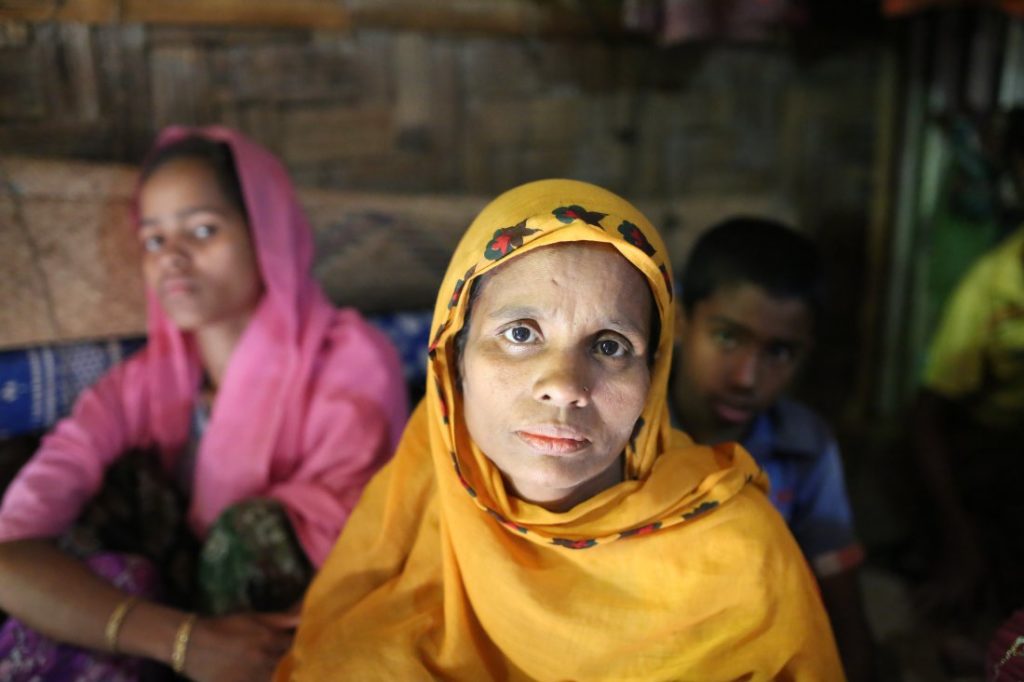Burma Could Be Guilty of ‘Crimes against Humanity’ as Rohingya Crackdown Intensifies
ASIA--PACIFIC, 12 Dec 2016

Rohingya Muslims who have fled from violence in Burma take shelter at the Leda unregistered Rohingya camp in Teknaf, Bangladesh, on Dec. 5 2016.
Zakir Hossain Chowdhury—Anadolu Agency/Getty Images
“Things are not as they are being portrayed by the government.”
11 Dec 2016 – Reports from Burma’s northern Arakan state, where violence against the country’s Rohingya Muslim minority has forced tens of thousands to flee for their lives, suggest the situation there is “getting very close to what we would all agree are crimes against humanity,” the U.N.’s top human-rights investigator for the country has said.
“I am getting reports from inside the country and from neighboring places too that things are not as they are being portrayed by the government. We are seeing a lot of very graphic and very disturbing photos and video clips,” Yanghee Lee, the U.N. special rapporteur on human rights in the country, tells TIME.
Burma has imposed a lockdown on the affected areas, as it conducts what it calls “clearance operations” following an attack on three border guard posts in early October. Nine policemen were killed in the attack, which the Burmese authorities blamed on Islamist militants.
Read More: Something Shocking Is Happening to Burma’s Rohingya People. Take a Look at This Timeline
But fears have been growing for the million-strong Rohingya people who live in the area, amid allegations of rape, extrajudicial killings and the torching of Rohingya villages by the Burmese military, which denies the claims.
Seen as illegal immigrants from neighboring Bangladesh and denied citizenship rights, the Rohingya have long been marginalized in Burma. In 2012, some 125,000 people were displaced amid communal fighting between Arakanese Buddhists and Rohingya Muslims, with rights groups accusing security forces of either standing aside or actively participating in the violence.
Read More: [Nobel Peace Laureate] Aung San Suu Kyi Can’t, or Won’t, Rein In Burma’s Army
As Arakan burns again, with around 21,000 people fleeing to Bangladesh in recent months, Lee called on the Burmese authorities to allow full humanitarian access to the northern section of the state that is also known as Rakhine. She also expressed her dissatisfaction with a government-supervised trip to some of the affected areas by a group of foreign diplomats and a U.N. official in early November. “No one should be satisfied with the trip,” she says. “This was a guided tour. Even though there was a heavy security presence there, people started to come out and try to speak to this delegation. And of course, afterwards, we’ve also heard that there were reprisals. These people were hunted down.”
On Dec. 9, 14 diplomatic missions, including the embassies of the U.S. and France, also called on Burma to give humanitarian agencies “full and unfettered access” to northern Arakan, “noting that tens of thousands of people who need humanitarian aid, including children with acute malnutrition, have been without it now for nearly two months.”
DISCLAIMER: The statements, views and opinions expressed in pieces republished here are solely those of the authors and do not necessarily represent those of TMS. In accordance with title 17 U.S.C. section 107, this material is distributed without profit to those who have expressed a prior interest in receiving the included information for research and educational purposes. TMS has no affiliation whatsoever with the originator of this article nor is TMS endorsed or sponsored by the originator. “GO TO ORIGINAL” links are provided as a convenience to our readers and allow for verification of authenticity. However, as originating pages are often updated by their originating host sites, the versions posted may not match the versions our readers view when clicking the “GO TO ORIGINAL” links. This site contains copyrighted material the use of which has not always been specifically authorized by the copyright owner. We are making such material available in our efforts to advance understanding of environmental, political, human rights, economic, democracy, scientific, and social justice issues, etc. We believe this constitutes a ‘fair use’ of any such copyrighted material as provided for in section 107 of the US Copyright Law. In accordance with Title 17 U.S.C. Section 107, the material on this site is distributed without profit to those who have expressed a prior interest in receiving the included information for research and educational purposes. For more information go to: http://www.law.cornell.edu/uscode/17/107.shtml. If you wish to use copyrighted material from this site for purposes of your own that go beyond ‘fair use’, you must obtain permission from the copyright owner.